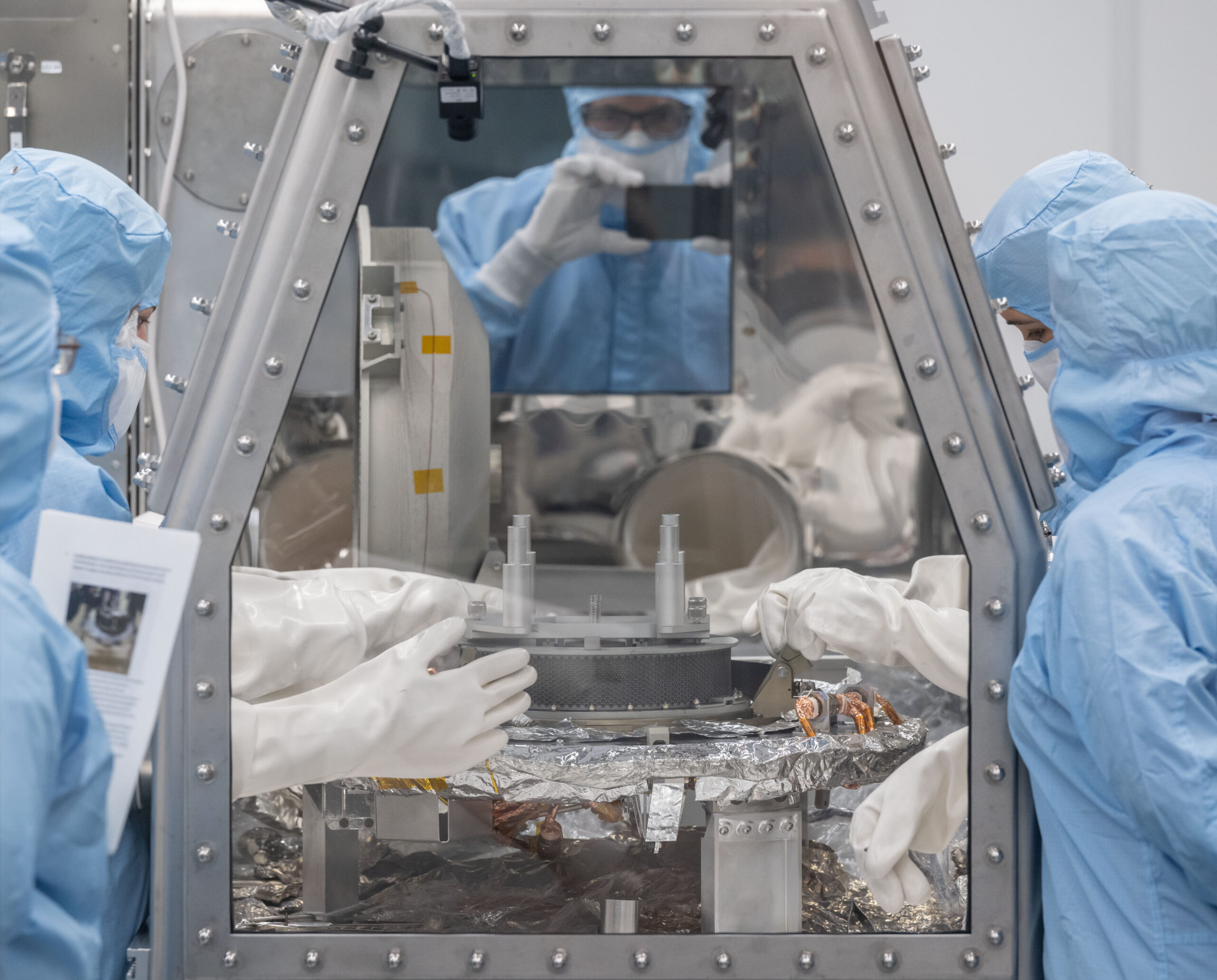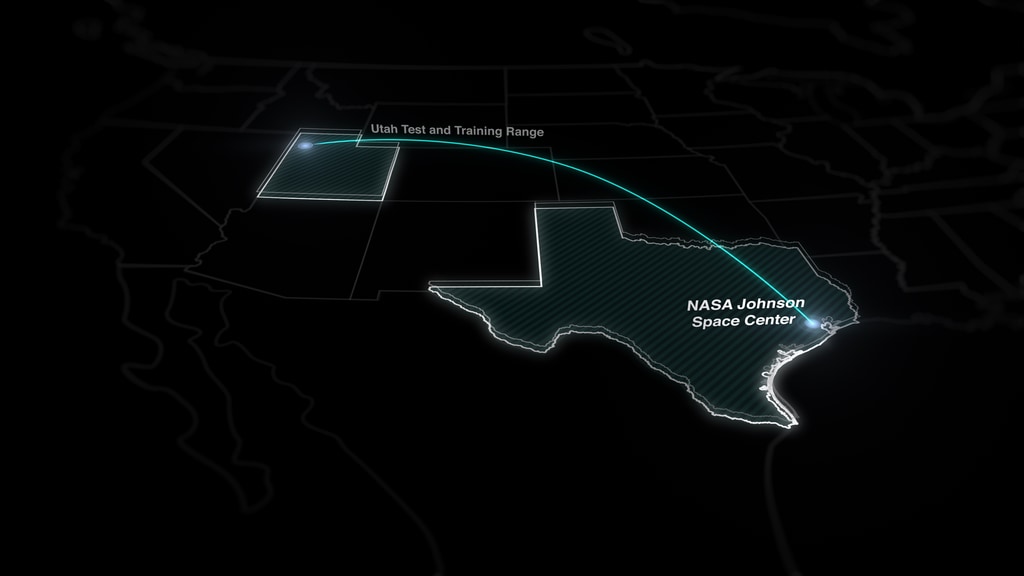COLLECTION HIGHLIGHT
Visit Space Center Houston to witness the astonishing journey of how NASA reached asteroid Bennu and meticulously collected this extraordinary asteroid sample. Space Center Houston is one of only three locations in the world where a sample from the asteroid, collected by NASA’s OSIRIS-REx mission, is displayed for the public.
We invite you to step into this tale of human ingenuity and the relentless pursuit of knowledge.

OSIRIS-REx, the Origins, Spectral Interpretation, Resource Identification, Security-Regolith Explorer, delivered its asteroid sample to Earth on Sept. 24, 2023, with material from asteroid Bennu.
With the sample secured, scientists will study the material from Bennu in laboratories on Earth to better understand how the Solar System evolved and the chemical ingredients for life.
Space Center Houston is one of three locations in the world where the public can view a portion of the returned sample.
The Origins, Spectral Interpretation, Resource Identification, Security-Regolith Explorer, or OSIRIS-REx, was NASA’s seven-year-long robotic mission to gather samples from an asteroid. Scientists worldwide and across disciplines — including Brian May, astrophysicist and lead guitarist for iconic rock band Queen — collaborated to plan and execute this long-range mission.
The OSIRIS-REx probe launched from Cape Canaveral Air Force Station, Florida on Sept. 8, 2016. Its target? A near-Earth, ancient asteroid named Bennu. The OSIRIS-REx spacecraft was 2,110 kilograms fully-fueled at launch on an Atlas V411 rocket.
OSIRIS-REx arrived at asteroid Bennu on Dec. 3, 2018. The spacecraft featured 2 systems that enabled sample collection — the Touch-and-Go Sample Acquisition Mechanism (TAGSAM) and the OSIRIS-REx Sample Return Capsule (SRC) capsule. After years of survey and rehearsal, OSIRIS-REx collected the sample on Oct. 22, 2020, using the TAGSM. The sample’s return to earth was slated for 2023.
So what was so special about Bennu to make it the focus of one of the most ambitious space missions ever attempted? Aside from being a near-Earth asteroid, Bennu has certain key characteristics that distinguish it from the other millions of asteroids in our Solar System.
The asteroid is roughly 500 meters in diameter — a little taller than the Empire State Building — and as a result, spins on its axis at a speed slow enough for sample collection. Smaller asteroids would spin too fast for sample collection of the “regolith,” or loose rocks and soil, that makes up their surface. Scientists estimated that when the Bennu sample returned to Earth, it would contain roughly 60 to 250 grams of regolith.
It’s also ancient! Scientists theorize that Bennu is a leftover fragment from the formation of our solar system 4.6 billion years ago. Primitive asteroids are rich in carbon and contain organic molecules, volatile and amino acids: the fundamental building blocks of life.
Bennu is well-preserved by the vacuum of space, which means not only could this pristine sample contain clues for discovering the origins of life, but also help us better understand other asteroids.
NASA’s OSIRIS-REx team trained meticulously to prepare for the sample retrieval once it arrived on Earth. The OSIRIS spacecraft did not stop when it delivered the sample capsule — it was ejected 102,000 kilometers (63,000 miles) above Earth’s surface in the early hours of Sept. 24, 2023.
When the sample capsule entered Earth’s atmosphere, the entire world held its breath. The success of the mission and the pure, pristine sample that had never touched Earth’s atmosphere were all on the line. About 10 minutes after it entered the Earth’s atmosphere at 9:42 a.m. CST, the sample capsule touched down safely in the Utah desert.
The sample capsule was taken to a temporary clean room and processed to be sent to its permanent home: NASA Johnson Space Center in Houston, Texas. Upon its arrival, NASA scientists began processing the sample. Though the quantity of sample is limited, NASA planned to distribute portions of the sample to researchers around the globe. A significant portion of the sample will be saved for future generations to study, as technology continues to advance.
A portion of the sample will be put on display for the public at Space Center Houston, the official visitor center of NASA Johnson Space Center — one of only three institutions in the world to publicly display the sample.

What’s next for the OSIRIS spacecraft? It’s off on a new mission! Now named OSIRIS-APEX, its next destination is the near-Earth asteroid Apophis. The goal of OSIRIS-APEX is to study Apophis for 18 months after the asteroid’s close approach to Earth on April 13, 2029.
HOURS TODAY

When you give, you make a lasting impact on the future generations of explorers, innovators, astronauts, and beyond.

Use code WEB15 for 15% off a Space Center Houston membership + an extra month, free parking, discounts and other stellar perks.